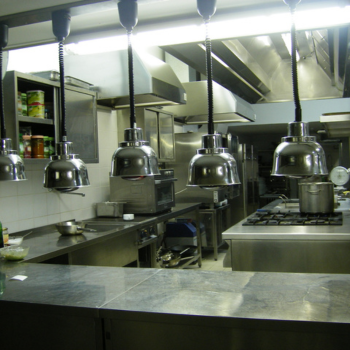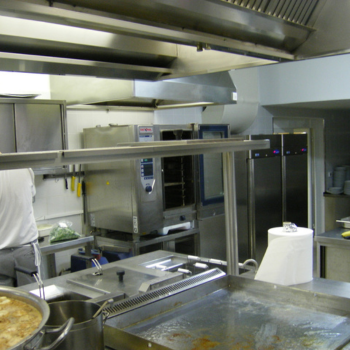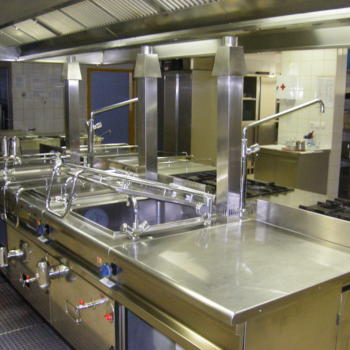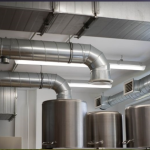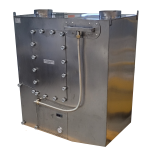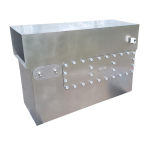0.00грн.
CheckoutHow to open a restaurant
Opening a restaurant and managing it is a huge undertaking in business, raising many questions that will determine the success of the new establishment.
To open your own restaurant, you need to know not only the general technology of creating a catering enterprise, but also take into account a lot of aspects: how to choose the right location and premises, how to design a restaurant so that every square metre of space generates income, how to choose the services that visitors need, how to find a professional team, and how to make the restaurant famous.
A well-thought-out concept is 50 per cent of success
First, you need to decide on the target audience for your establishment. According to professionals, in order to choose the best location for your establishment, you need to find out the tastes of the audience of your future restaurant. If you want to open a restaurant specialising in a particular cuisine, you should determine its price segment.
Do not forget that there is competition in the restaurant business, and the ‘strongest’ wins. It is always useful to know the weaknesses of your competitors and determine how you can surpass them.
Choosing a location for your restaurant
Choosing the right location for your restaurant is one of the most important tasks, and in some cases, it is the dominant factor for success. There are generally accepted locations for each type of catering establishment. If you are opening a fast food restaurant, it is better to choose a place where there is a constant crowd of people, and for a mid-range restaurant, it is better to choose a place near business centres.
Expensive restaurants also depend on their location; for example, an expensive restaurant in an industrial area has virtually no chance of success. Potential customers assume that an expensive establishment should be in a presentable location.
Restaurant equipment
Restaurant equipment is, first and foremost, equipment for the restaurant kitchen.
No matter how beautiful or stylish an interior you create for your venue, how much money you invest in renovations and utilities, or what kind of exciting music and entertainment programme you offer, guests come to a restaurant first and foremost to enjoy good food.
And without modern equipment for a professional kitchen – meeting all sanitary, hygiene and technological standards – you won’t be able to impress or delight your visitors.
Equipping a kitchen professionally is not as simple as it might seem at first glance. You need to understand how to organise technological and logistical processes, product storage and staff workflow, which set of equipment will suit your planned menu and match the concept of your venue, which features should be prioritised and which are less important.
At present, there are several ways to approach this task.
- The simplest – and most expensive – option is to hire a consultancy. This is what many restaurant chains or restaurateurs with wealthy investors choose to do. A consultancy will deliver a turnkey solution. But be prepared to pay a significant amount for their services.
- The second path, which almost everyone opening a food service venue follows regardless of format, is to hire a specialist who understands all these aspects and has experience launching catering businesses. There are plenty of such professionals, and you’ll easily find a like-minded expert with the right qualifications who can liaise with us as the equipment suppliers.
- The third option is the most challenging, the cheapest, and the most inspiring: to develop your own concept for the start-up and, after consulting specialists, compile the equipment list yourself.
Menu creation
The composition of the menu largely depends on the concept of the restaurant, as the concept outlines the general direction of the cuisine and provides recommendations on the number of dishes and pricing policy.
The development of the final menu should be entrusted to the restaurant's chef. The chef should be hired no later than two months before the restaurant opens. Because the menu is his domain.
Staff selection
Professionally selected staff is half the success of a restaurant. It is no secret that the most important people in a restaurant are the manager and the chef. It is up to them to form a strong team, whose efficiency affects the overall atmosphere of the restaurant, so the manager and chef must be selected in advance. It is also better to select the rest of the staff some time before the opening so that there is time for the necessary training.
Of course, these are not all the components for opening a successful restaurant. It is also necessary to:
- think through the features of the exterior design and layout,
- draw up a kitchen design with technological processes,
- make a list of inventory and equipment,
- draw up a business plan for the restaurant,
- calculate the costs of organisation.
Generally speaking, a restaurant kitchen design includes:
- Hot food preparation area
- Cold food preparation area
- Kitchenware washing area
- Tableware washing area
- Vegetable preparation area
- Storage room/pantry
- Meat or meat and fish preparation area
- Shower/toilet
- Ventilation
The areas may not be located as separate rooms, but as zones within the overall space of a professional kitchen.
What kind of restaurant is profitable to open?
This is one of the first questions asked by many who have the desire and opportunity.
In today's world, where there is a constant lack of time, catering formats such as fast food, various kiosks, small coffee shops — street trading and snacks on the go — are coming to the fore.
Every year, consumer demands for the quality and variety of fast food, as well as for service and customer care, are growing.
Therefore, in order to conquer the market, small cafes and self-service restaurants must constantly improve their level, surprise guests with a varied menu and new items, and always be at the forefront of restaurant fashion — and this is only possible thanks to modern, high-tech professional kitchen equipment.
Let's consider some aspects that can be used to draw certain conclusions about a restaurant that is about to open.
The price level of the restaurant
Many people who want to open their own restaurant and have sufficient financial resources want to open an elite and expensive restaurant.
However, the number of buildings, premises and locations for elite restaurants is limited, and there are already enough elite restaurants on the market.
This means that it is difficult, though not impossible, to create your own elite restaurant with its own unique ‘flavour’. But the significant financial costs of opening such a restaurant may not always pay off, even over a long period of time, i.e. more than 5 years. Therefore, opening an elite restaurant today is more a matter of prestige than a highly profitable business.
Furthermore, few people now pay attention to the ‘other side of the coin’ that elite (or rather, expensive) restaurants are increasingly offering significant discounts on their high-priced menus; discounts of up to 10% have become the norm, and for particularly frequent or well-known guests, discounts of up to 50% are common. This situation is the first sign that there are enough elite restaurants, especially since many of them have introduced a club system. This system also has a downside: on the one hand, it is a way to retain customers, but on the other hand, it cuts off so-called ‘one-time’ guests from the street, who can bring considerable profit to the restaurant. At the same time, today some recognised elite restaurants, in pursuit of additional profit, or more precisely and more often in pursuit of customers, are reaching the point of absurdity by introducing ‘business lunches’ into their services. So is it really an elite canteen or is it no longer an elite restaurant?
Given these facts and the current situation, it is necessary to make a very careful decision: to be or not to be another elite restaurant.
Many more mid-range restaurants are opening. Such establishments require significantly less capital to open and are more popular with visitors due to their affordability.
Another question is what this restaurant should be like.
The answer is also simple: either modelled on a beer pub or in a democratic European style. In addition, mid-range restaurants are affordable for the vast majority of people.
Another important aspect of mid-range restaurants is that they always strive to and are able to raise their service to a higher level without changing their pricing policy, which only increases the profitability of the establishment. If the service cannot be improved, it will still correspond to the democratic average level of a middle-class restaurant, i.e. the principle of ‘if you haven't gained anything, you haven't lost anything’ applies.
Venue Concept. What types of food service formats are there?
In addition to the familiar café, bar, restaurant, canteen or fast food outlet, many new types of catering establishments have now emerged. Let’s explore them together:
Restaurant – a food service establishment with a varied menu offering a large number of dishes, including signature cuisine. Table service is provided.
Bar – offers a narrower menu: mainly alcoholic drinks, snacks, and desserts. Bars do not typically have a full kitchen for preparing meals.
Café – also provides table service, but with a smaller menu than a restaurant. The interior and level of service are held to less demanding standards.
By the way, cafés or various dumpling houses, cheburek stalls, and buffets are outdated catering formats from the Soviet era, when the goal was simply to feed socialist workers.
Today, guests have different expectations, and modern venues are now more like various types of restaurants than the cafés or buffets of half a century ago.
Fast Food – well-known chain and independent quick-service restaurants that have firmly claimed their place on the market. Their hallmark is a fixed, narrow menu, low average bill, and a constant flow of visitors.
There’s no need to dwell on fast food – its pros, cons, and pitfalls are well known. It’s worth mentioning the very popular and even cheaper, more accessible variant of fast food: street food.
Street Food or Street Retail – kiosks, vans, trailers, stalls, and similar points where food can be bought and eaten immediately. Seating is usually not provided, and the “one-hand rule” applies – food should be packaged so it can be held in one hand. This category also includes mini coffee stands and beverage kiosks.
Slow Food – literally “slow food”. This format arose as an alternative to fast food and positions itself as healthy dining. It includes vegetarian restaurants, salad bars, soup bars, and similar concepts. The main idea is that even a quick snack can be healthy and nutritious.
Free Flow – this concept falls within the fast casual format: something between fast food and casual dining. Translated as “free access”, it is essentially a self-service setup similar to a classic canteen, but serving restaurant-quality dishes. A hot station is present where chefs serve the food. It resembles a hotel restaurant.
Food Court – literally a “restaurant court”. This is the dining area in a shopping centre, airport, hotel, or other public place, where a row of quick-service restaurants is located. A very popular format, used for a wide range of purposes.
Petrol Station Restaurant or Café – for petrol station chains, this is an excellent way to gain more loyal customers, and for drivers, a great additional service. In recent years, petrol stations rarely open without a food service option.
There are also hybrid types that combine different features –
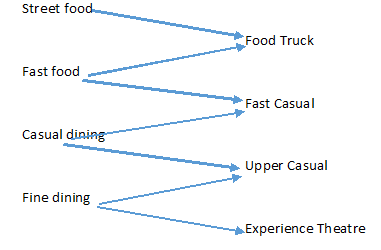
Food Truck – a mobile restaurant on wheels. It can travel around the city or remain parked. In Kyiv, we’ve seen such venues in the form of a tram and a double-decker bus. The vehicle type can be anything. The main idea is to enjoy a meal as if outdoors but with a restaurant-like experience. Fast food on wheels.
Fast Casual Restaurant – positioned between fast food and a casual restaurant. Currently the most popular and rapidly growing restaurant format. It can be described as a quick and affordable dining option that combines the speed of fast food with the comfort of spending time with friends or family as in a restaurant.
Quick Service Restaurant – quick-service establishments that use their own semi-prepared ingredients of a high readiness level, ensuring both quality and speed. These are most often found in business centres.
Upper Casual – a format where the restaurant should remain accessible and informal, yet have its own concept, interesting cuisine, and a touch of sophistication. Common Upper Casual concepts include beer restaurants, bakeries and patisseries, coffee shops, bars, steakhouses, national cuisine restaurants – such as grill houses, rib joints, trattorias, taverns, and even nightclubs.
Fine Dining – a term covering high-end restaurants: exceptional cuisine and premium pricing. Luxurious interiors, signature dishes, and a high average bill. However, restaurateurs today are more inclined to open mass-market venues.
Experience Theatre – a gastronomic theatre. As the name suggests, this is an intermediate format between a theatre and a restaurant. The first venue of this kind was, of course, opened on Broadway.
So, choose your format, define your concept and menu, write a business plan, seek investors and grants, prepare your budget, and open a successful Ukrainian venue!
